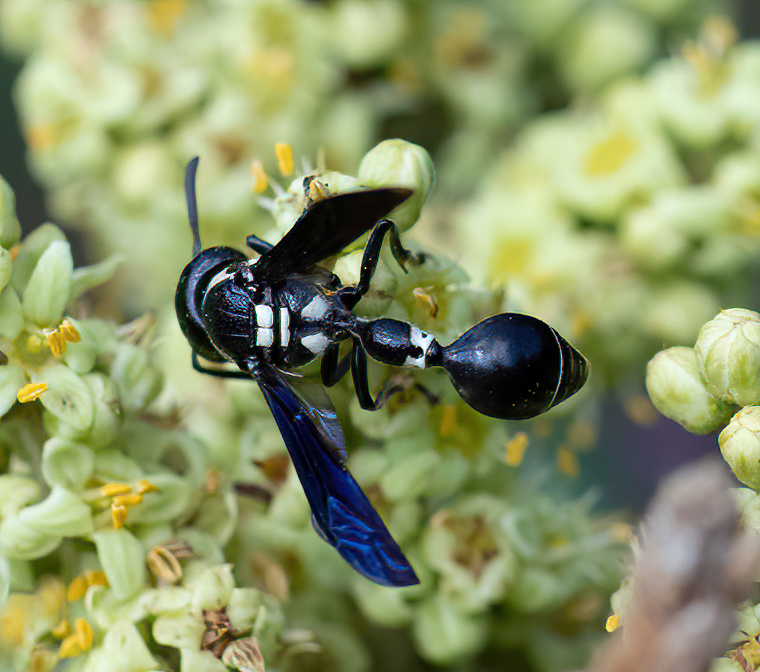
Winged Sumac (Rhus copallinum) flowers seem to be unusually attractive to wasps. Here is a kind of mason wasp helping itself to nectar. This one is Zethus spinipes variegatus, its common name is Black Thorn-footed Mason Wasp. Zethus, as do many scientific names, comes from classical mythology. Zeus, the king of Greek gods was a randy sort. On one occasion he became infatuated with Antiope, a beautiful maiden, the daughter of a King of Thebes. As he was wont to do, Zeus transformed himself into another creature, in this case a satyr. He then raped Antiope, who ultimately gave birth to twin sons named Amphion and Zethus. After many adventures, they began to build protective walls around Thebes. Zethus was a master of agricultural skills. He was able to use beasts of burden to laboriously drag large stones to form his part of the walls. Amphion, on the other hand, was very gifted in music. He made such beautiful melodies he charmed the large stones forming his part of the walls, and they moved themselves into position.
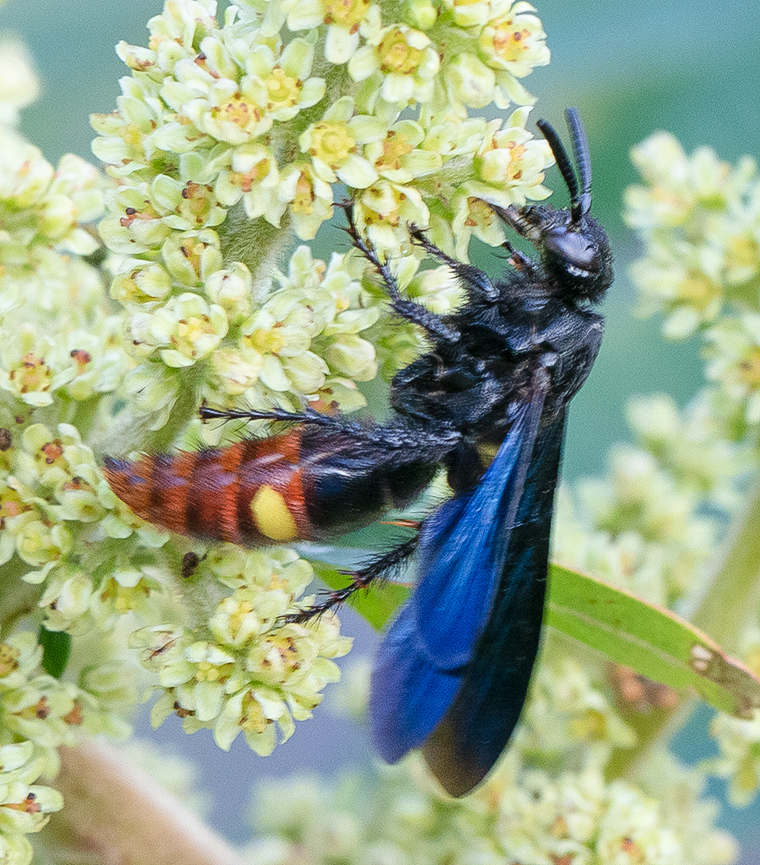
This is a Two spotted Blue-winged Scoliid Wasp (Scolia dubia dubia). The blue in the wigs is clear in this view, but only one of the two abdominal spots is visible here, but it has another on the other side of its abdomen. Adult Scoliid wasps feed on nectar (as here) or pollen. Thus they are herbivores. Their larvae are carnivores, however. This pattern is characteristic of most wasps. To provision their larvae, the Scoliid wasps prey on the larvae of scarab beetles. To find these larvae, the wasp must detect them underground, dig down into their burrows, and then lay an egg on the larva. When the egg hatches, it gradually devours the beetle larva.
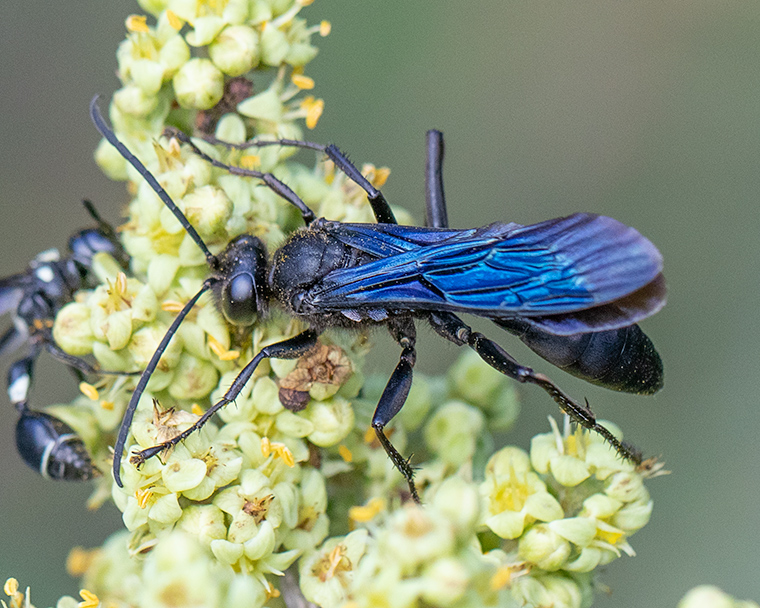
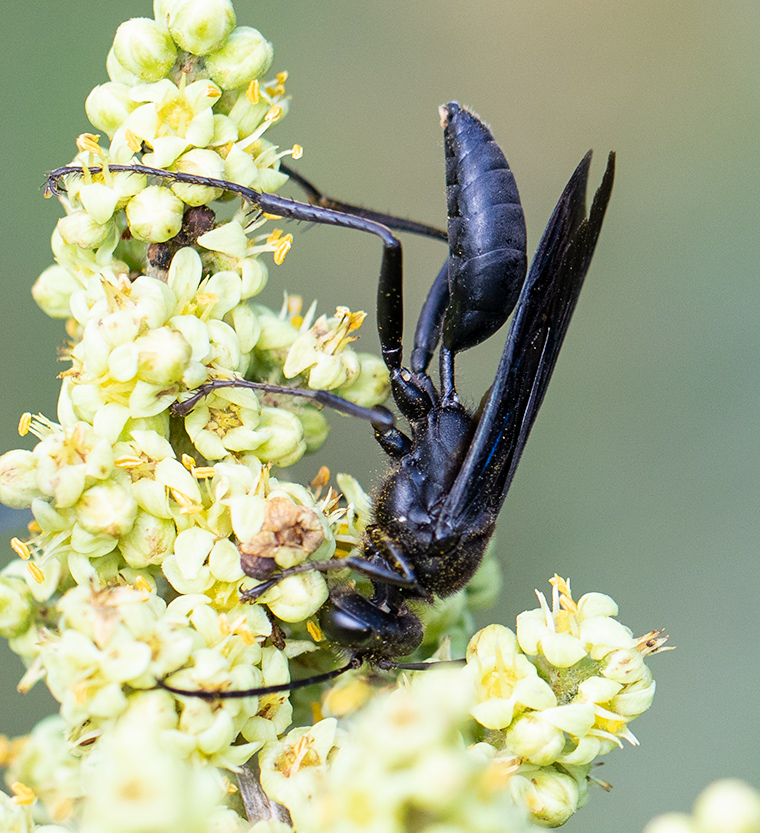
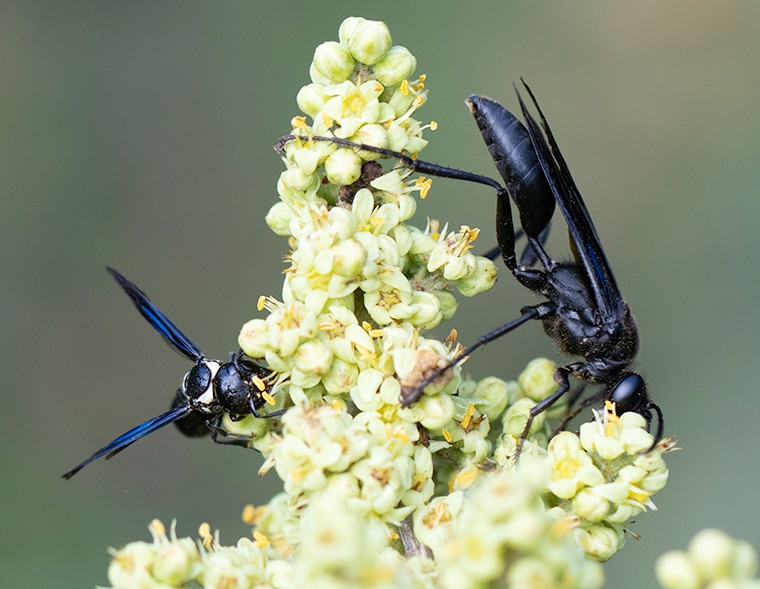
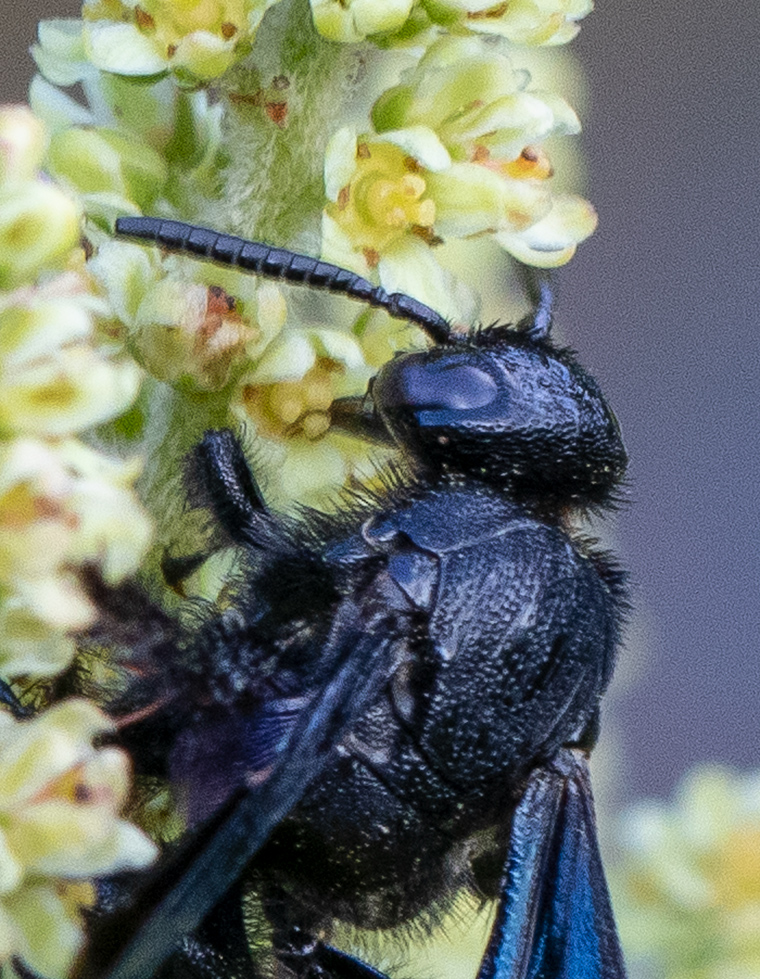
This photograph of head and thorax of a scoliid wasp shows its wonderfully segmented antenna. The rugged exoskeleton on its thorax makes it look as if it is wearing old-fashioned armor.
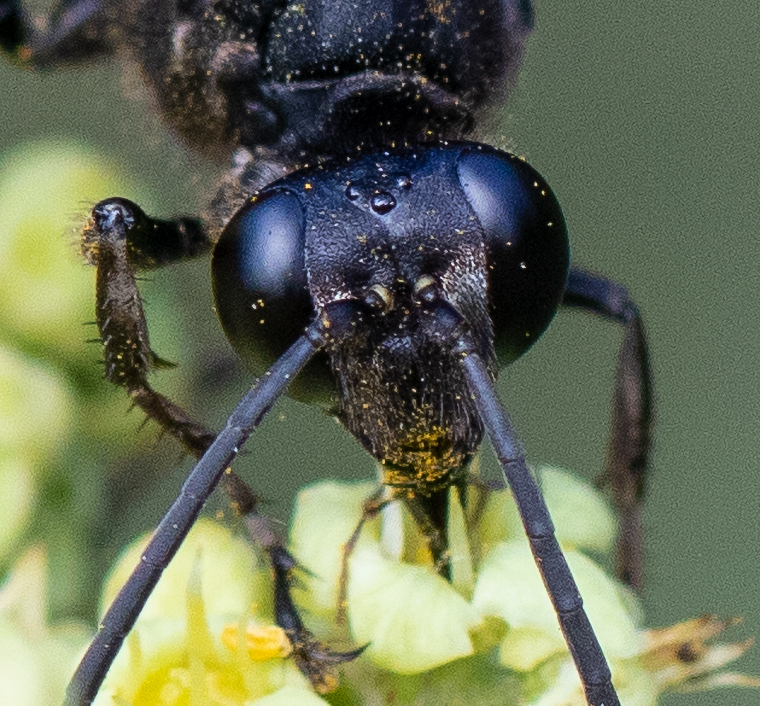
Here is the head of a Giant Black Wasp drinking nectar. The pollen stuck on its head shows it is an able pollinater. In addition to its two large compound eyes, it has three small simple eyes on top of its head. Note also how different the segmentation pattern of its antennae from that of the scoliid wasp shown above.
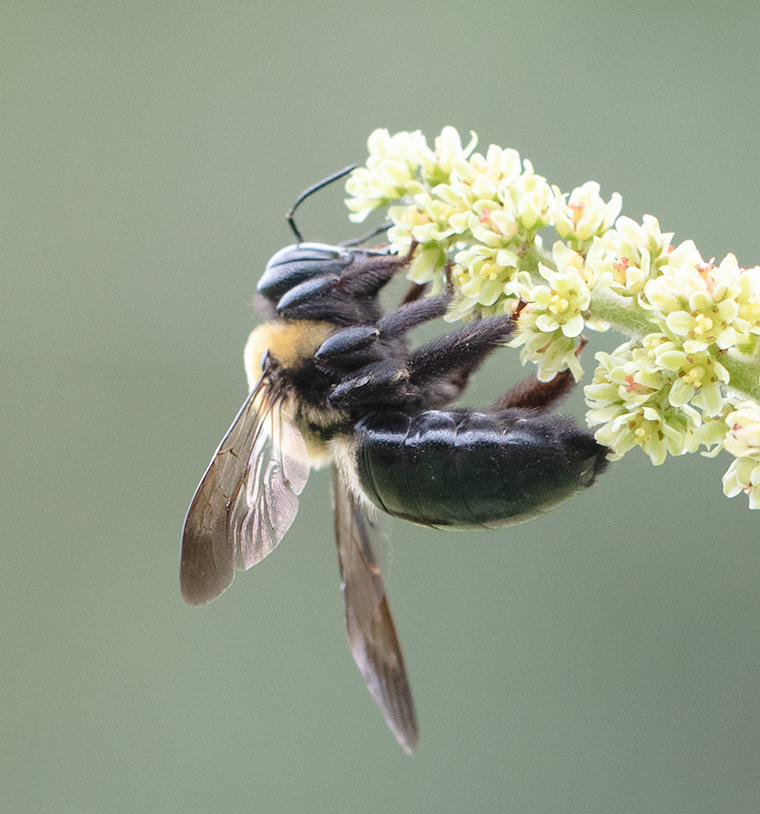
Sumac flowers also attract bees. This is a Carpenter Bee (Xylocopa virginica). The very one that bores holes in your deck rail or other wooden parts of your house. They deposit eggs in the tunnels and then provision them with a mixture of pollen and nectar for the larvae.
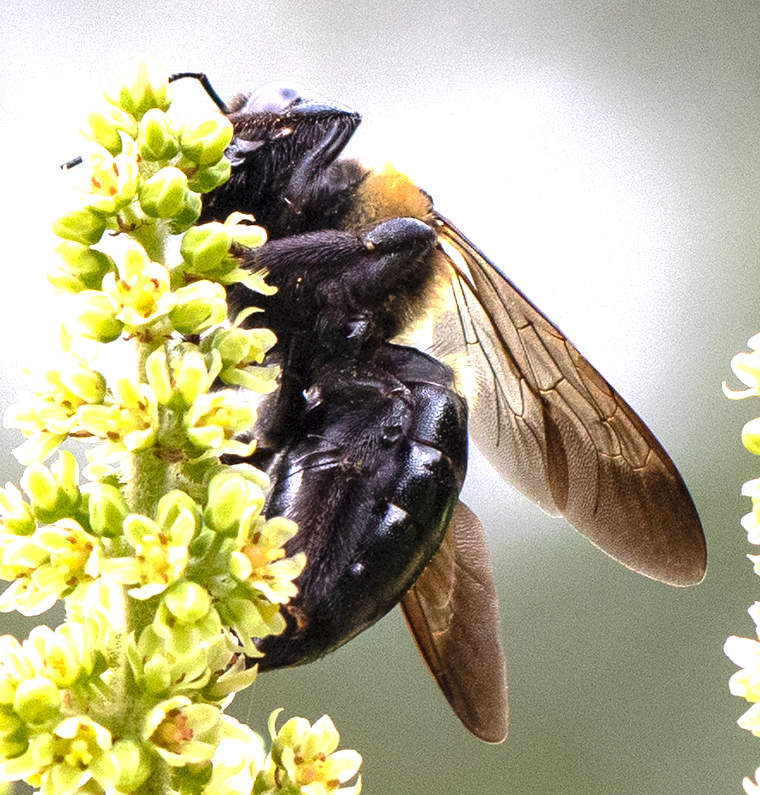
Here is another Carpenter Bee. At first glance one might guess the this was a Bumblebee (Bombus sp.), but the hairless abdomen is a giveaway for a Carpenter Bee. Bumblebees have hairy abdomens.
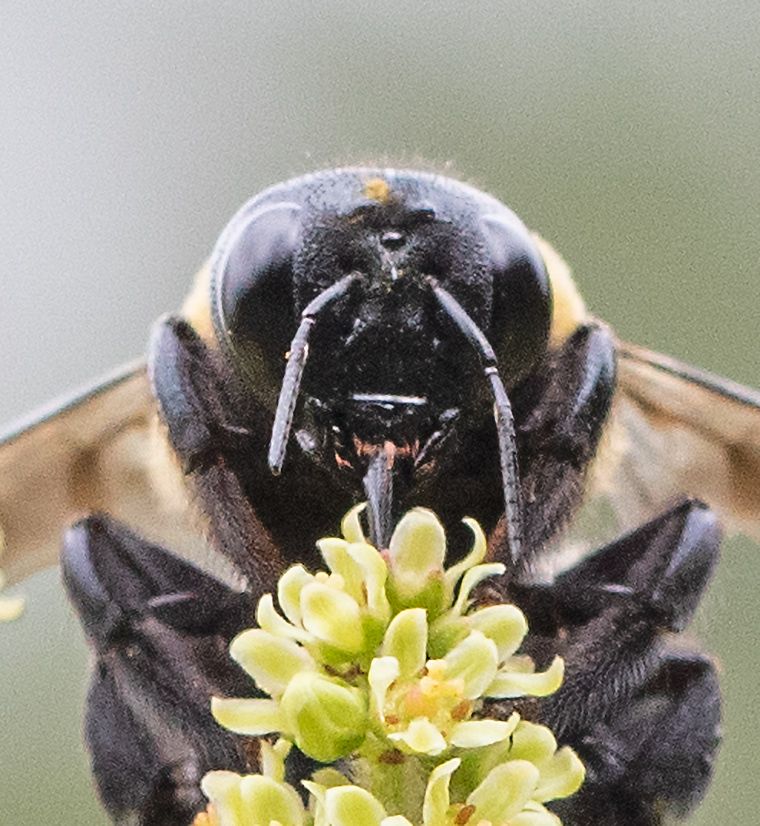
Wasp and bees are wonderfully interesting creatures, as are the plants that support them. How lucky I am to be able to observe them on the way to my mailbox!
Discover more from A Naturalist's Journal
Subscribe to get the latest posts to your email.

Such great photos! I was picking up our post this afternoon and noticed several gulf fritillary caterpillers on the passion flower vine. I don’t remember seeing this in the past years but I do see them yearly on a native ipomea vine out back.Also see the zebra longwing on another passion vine that grows in one of the flower beds near the porch. This particular passion vine is very small and is one that does well in a partial shaded situation.In years past they have produced many zebras.
Wonderful! Thanks for the comments. I have seen Gulf Fritillary caterpillars on the Passion flower vines at our place. I would like to see Zebra Longwing caterpillars, but so far no luck.